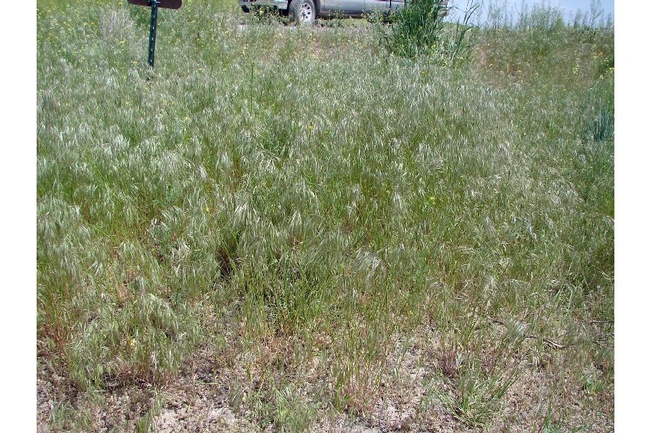Beat the Cheat
Part II: How to get rid of cheatgrass!
Part One of the cheatgrass story informed us of its invasive weed status and how it creates a fire risk around the home. But there is hope.
First, remember that any disturbance of the soil is an invitation to cheatgrass - maintaining an adequate cover of native plant species and biological soil crusts can render some communities more resistant to cheatgrass invasion.
Where soils have been disturbed, however, you must remove live plants and prevent seed production. This takes hard work and persistence and then more persistence! For small areas, hand pulling is effective if done diligently over many years. Cheatgrass is typically a winter annual grass. It grows early and rapidly (often before other annuals germinate) and is fairly easy to identify and manually pull during the cool temperatures of late winter and early spring, especially when it first appears.
For areas where mature communities persist, I have developed a 2-year eradication plan that works well. First, I lift the roots out of the ground a few inches below the soil (these fine, dry roots at the surface are another fire hazard) with a soil knife and remove as much of the plant, seeds, and roots as possible. Yes, the seeds germinate better in the light and fluffy soil left behind so I tamp down areas I have weeded to condense the soil structure. Once these nests of old grasses and seeds are gone, it is much easier to remove the new plants that might come up in year two (and three, and four...). You can also use a hula hoe but remember to rake up as much of the plants, roots, and seeds as possible.
If there is a community of cheatgrass that goes to seed before you have time to remove the plants, your neighbors will thank you if you at least remove the seeds. Using a string-trimmer when the seeds are still immature can be effective to reduce seed spread but you still need to go back and remove the plants so they do not regrow and to reduce the fire risk.
For larger infestations, chemical controls or grazing should be considered. Be careful using herbicides because those recommended for controlling cheatgrass can also harm nearby native species. UC IPM has information on controlling brome grasses including timing of herbicides, if used. Grazing by goats is another option. Grazing during the spring and fall must be used for at least two consecutive years to be effective.
The use of mechanical equipment is not recommended because it disturbs the soil and may exacerbate the problem. So plan some time for some old-fashioned weeding to get rid of this pest of a plant.
For more information:
